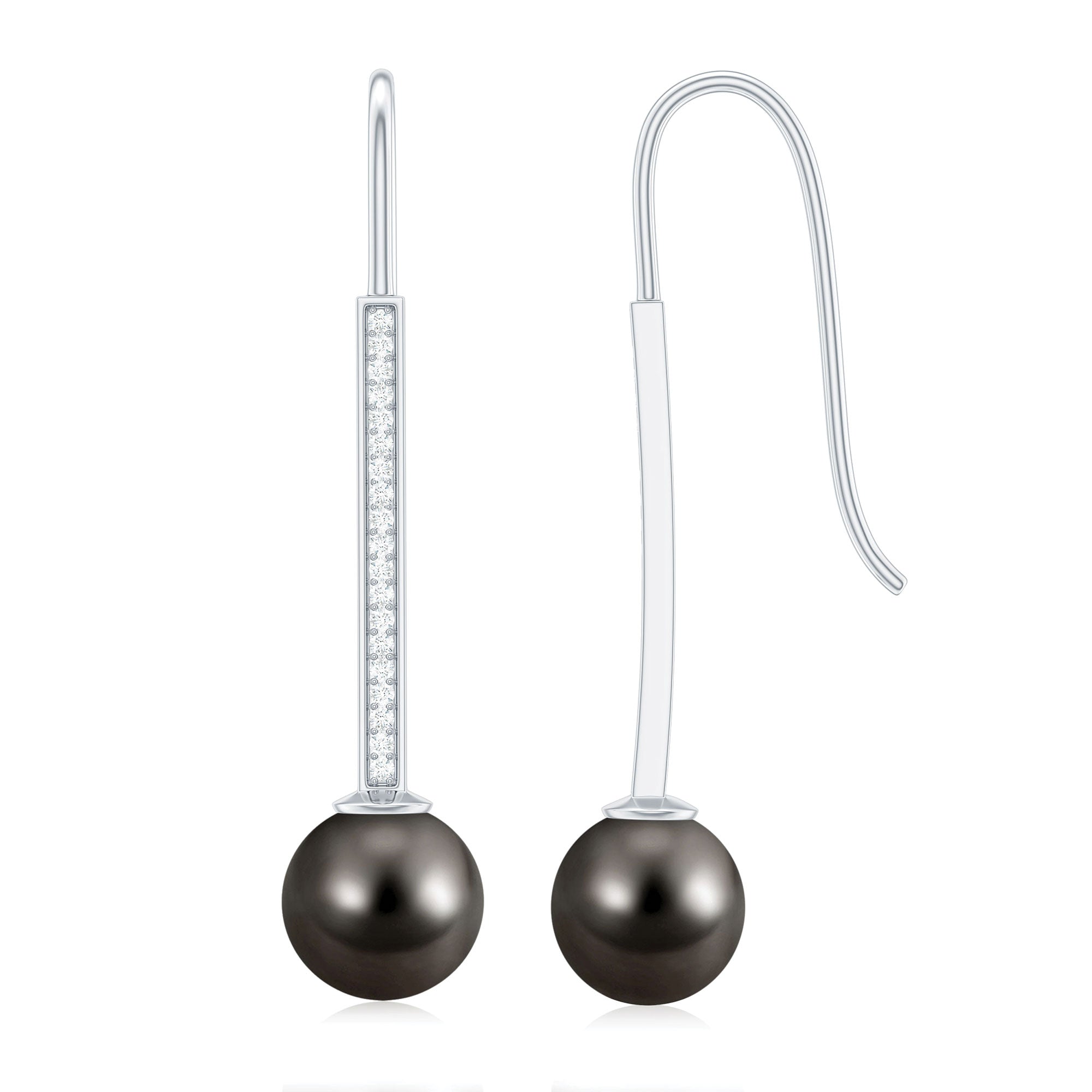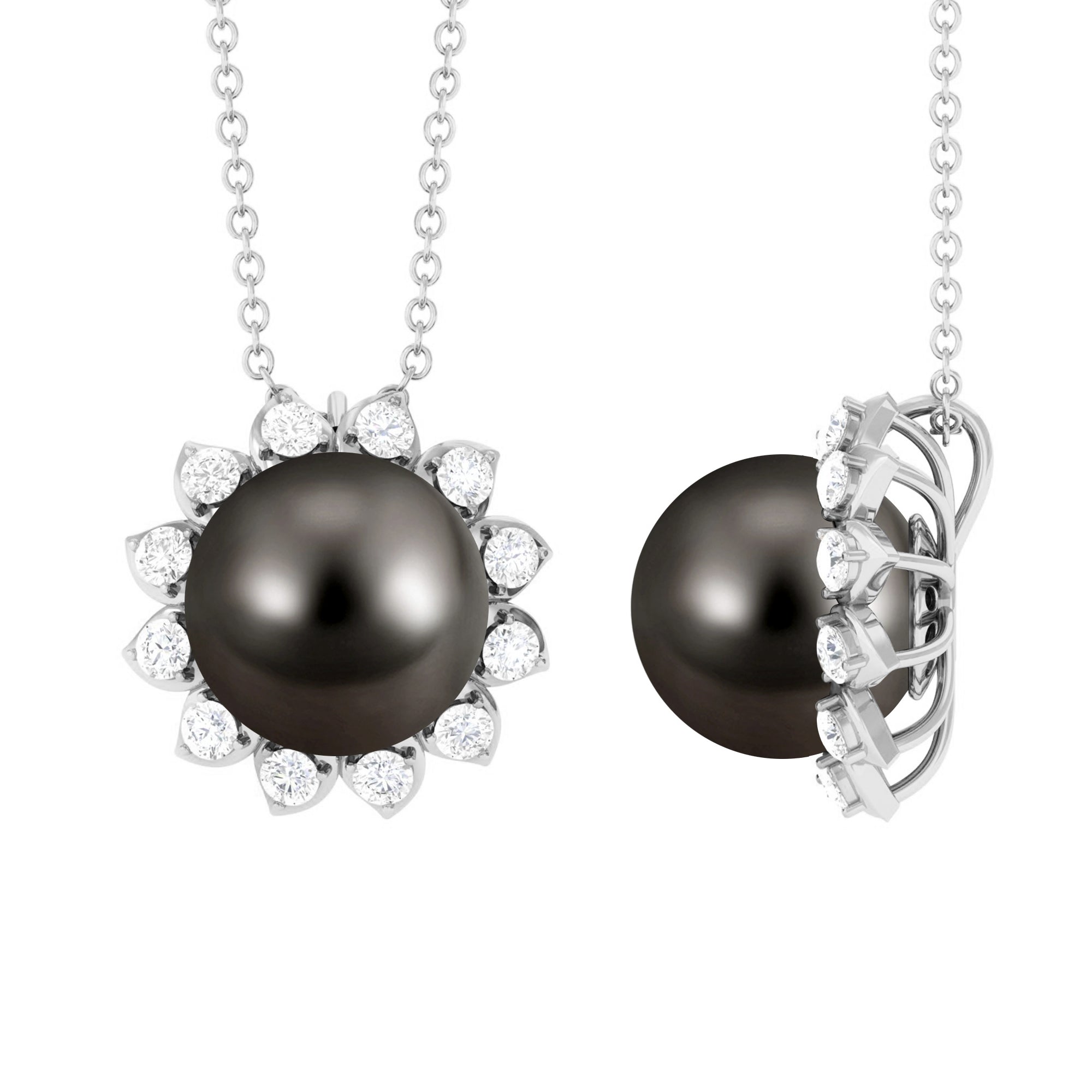All About Tahitian Pearl: Types, Colors, Description, Origins & Details
Tahitian Pearl: hands down the most unique and exotic kind of pearl. If you’re a fan of one of those bold and dramatic style statements, nothing fits better than a lustrous Black Tahitian Pearl. What’s more classy than black after all? Black jewelry is the new cool today! Its classic beauty which is needless to be mentioned sets the stage for our increasing curiosity to explore this June birthstone more. That being said, our Tahitian Pearl education guide is the overall guide to address all the basic knowledge revolving around Tahitian Pearl right from the history and origin to the grading factors and properties to make a prudent decision while setting out to buy Pearl Jewelry.
Properties of Tahitian Pearl
Hardness
Having a hardness of around 2.5 to 3.5 on Moh’s scale, a Tahitian Pearl sure does require some extra care since it is pretty delicate.
Transparency
Tahitian Pearl is known to be translucent to opaque with a refractive index between 1.530-1.685.
Fluorescence
Both natural and cultured Tahitian Pearls are observed to fluoresce pink to orange-red reaction when placed under ultraviolet light. Fluorescence can be a determining factor to know a fake pearl from the real one.
Origin & History
The lustrous beauty of Tahitian Pearl had made everybody an admirer. But how exactly did it come into picture? What is the history behind it? Don’t we just want to know it all? Hold on! Let’s give you an idea. According to ancient beliefs, Tahitian Pearl was given to Tane, the god of beauty and harmony. Even during that time, Tahitian Pearl was believed to illuminate a dark vault with its radiant shine and that’s what it started being known for. It has been mentioned in the pages of history that Te-ufi, the oyster of Tahitian Pearl, was gifted by God Oro as a symbol of happiness after successfully completing his voyage to earth on rainbow. Around 16th or 17th century, the explorers in Europe had discovered Polynesian island wherein Tahitian Pearl were produced in Pinctada margaratifera oysters. Its modish black beauty captivated such attention that it was traded near depletion in mid 1900s.
Where is Tahitian Pearl found?
Having discussed the history of Tahitian Pearl, where exactly does its formation take place today? Let’s take a look with our Tahitian Pearl education guide. It is known to be produced today in Tahiti, an island in French Polynesia. And that’s exactly where its name has been inspired from. It is formed in a black lipped Pinctada margaratifera oyster and is known to be naturally black in color which makes it so alluring and thus valuable.
Tahitian Pearl Quality and Price Filters
Tahitian Pearl Quality and Price Filters: How exactly do you judge the quality of your Pearl jewelry? We’re all so fascinated by these Black Tahitian Pearls that being well versed with quality becomes all the more important. Let’s give you an idea with our Tahitian Pearl guide:
Color
The color of a Tahitian Pearl is actually the pearl’s body color and is available in number of hues that is black and charcoal greys with peacock or green overtone. A secondary overtone can also be seen when light is reflected off the surface of a pearl.
- Deep Black: The most common color of Tahitian Pearl, also known for its exceptional quality! Possessing lustrous black color, there is no deeper and darker colored Pearl you can find.
- Purplish Green: The dark green Tahitian Pearl with slight purplish overtones is another unique variety of Pearl possessing excellent luster.
- Blue Green: This green Tahitian pearl with slight bluish tint also possesses excellent luster and is also quite rare.
- Peacock Green: Their unique color hues is what makes everyone a fan. Known to possess green along with golden, purple and blue hues, Peacock green Tahitian pearl is sure very unique.
Size
The Tahitian Pearls can be measured on the basis of their Carat Weight, however, more than often, the better measuring factor for pearl can be in terms of their size in millimeters. In case of Tahitian Pearls the size can reach sizes as large as 13.0 MM.
Luster
Luster is the deep shine produced by pearls which is a combination of the exterior shine as well as the glow from within. This luster occur due to the reflection of light from the calcium carbonate crystals. Nacre’s thickness and layer arrangement in a pearl determine the luster. Tahitian Pearl is known to possess smooth satiny luster.
Nacre Quality
Nacre, known to be the substance with which this June birthstone is made up of, determines the overall luster and quality of Tahitian Pearl. Having a thickness of a minimum of 0.8 mm, Tahitian Pearl is known to have a thick nacre as per our Tahitian pearl guide.
Tahitian Pearl Grading Value
What’s a more easy way to figure out the quality of Tahitian Pearl than the old school grading system. Informative and interesting! That’s how we’d label the grading system of Tahitian Pearl. Whenever wondering how to buy Tahitian Pearl, take a look at this to judge the quality better:
AAA
The most sought after grade value of this beautiful June birthstone! Having a 90% free of inclusions clarity along with excellent luster, Tahitian Pearl belonging to this category possess a good color saturation.
AA+
Another valuable grade of Tahitian Pearl! Having a 75-80 % free of inclusions clarity along with high luster, Tahitian Pearl belonging to this category possess a moderate color saturation.
AA
Having a 65-75 free of inclusions clarity along with medium to high luster, Tahitian Pearl belonging to this category possess a moderate color saturation.
A
Having a 55-65 free of inclusions clarity along with low to medium luster, Tahitian Pearl belonging to this category possess a low to moderate color saturation.
Benefits of Tahitian Pearl
As rare as this June birthstone is, it possesses equally wholesome benefits. Known to symbolize hope, wisdom and purity, Tahitian Pearl is for time long, believed to have some magical impact on the wearer. Let’s take a glance with our Tahitian Pearl guide:
Physical Healing
Tahitian Pearl has long been known to heal wounded hearts with much ease, thus protecting the wearer from all kinds of negative energies. It is even known to bless the wearer with wisdom, knowledge and good luck.
Mental Healing
Tahitian Pearl has long been known to heal wounded hearts with much ease, thus protecting the wearer from all kinds of negative energies. It is even known to bless the wearer with wisdom, knowledge and good luck.
Materialistic Benefits
Last but not the least, prosperity and financial soundness is something we’re all chasing in our life and Tahitian pearl is known to bless the wearer with wealth.
Frequently Asked Questions
How is a Tahitian Pearl formed?
In nature, all the mollusks can produce pearls when a microscopic organism gets trapped inside its shell. In response to this foreign entry the mollusk starts to deposit layers of calcium carbonate in the form of aragonite.
What is difference between cultured and natural Tahitian Pearls?
Tahitian Pearls are formed as a defense mechanism of mollusks when an irritant gets trapped inside the mollusk. In case of natural pearls, the formation takes place naturally but it is not the case with cultured pearls, which are formed with the help of human intervention when an irritant is introduced in the mollusks.
Where do Tahitian Pearls come from?
Tahitian Pearls are grown in tropical lagoons located in French Polynesian Island chain and are exported by Tahiti.
How to take care of Tahitian Pearls Jewelry?
When it comes to Tahitian Pearl jewelry, the simple rule of thumb is to wear them last and take off first. Use of hairspray, lotion or perfume can dull the luster of the pearl. After their use, wipe them with soft tissue or cloth before putting them back. The organic gem must be kept in soft cloth bag to help them breathe.
What is a Tahitian Pearl certification?
The most common Tahitian Pearl Certifications includes from GIA, IGL and HRD labs. It is usually a document you receive on the behalf of the aforementioned 3rd party labs which describes an Tahitian Pearl in all of its characteristics.
Each and every party’s defining grounds may defer.
What is special about Tahitian Pearl?
What else could it be? It is, without a shred of doubt, the lustrous black color of Tahitian Pearl. What makes this black pearl unique is that its black color is purely natural, free of any synthetic treatments.
What is the birthstone of Tahitian Pearl?
Tahitian Pearl is known to be the birthstone of June.
What are the different shapes of Tahitian Pearl?
Tahitian Pearl in its natural state can be found in variety of different shapes including round, semi-round, drop, baroque and circle baroque.
Conclusion
Tahitian Pearl, the rarest and the most exotic out of all pearls is known for its unique lustrous beauty worldwide. We all have seen it and we’re all an admirer already. That gets us all the more curious to familiarize ourselves with this unique June birthstone more. Whenever wondering how to buy Tahitian Pearl, we’re sure you’ll get your answers here in our Tahitian Pearl education guide. We have tried to cover everything you might be interested to know of under our radar. We hope it was a fun yet informative ride. Here we sign off wishing you all the luck in selecting your favorite Tahitian Pearl jewelry.





